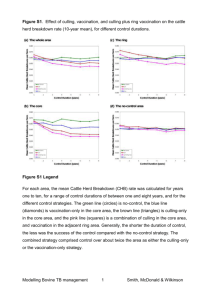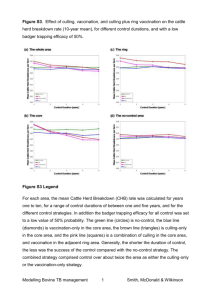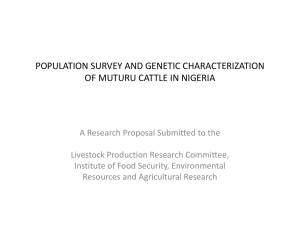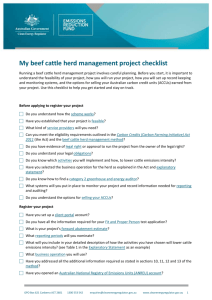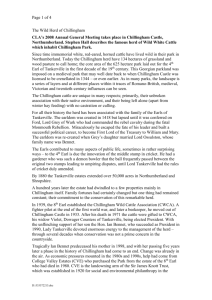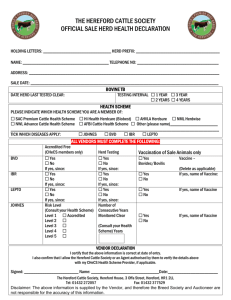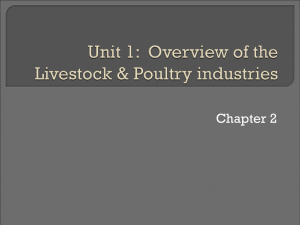Page of 2 Chillingham Cattle Stephen J.G. Hall s.hall973@btinternet
advertisement
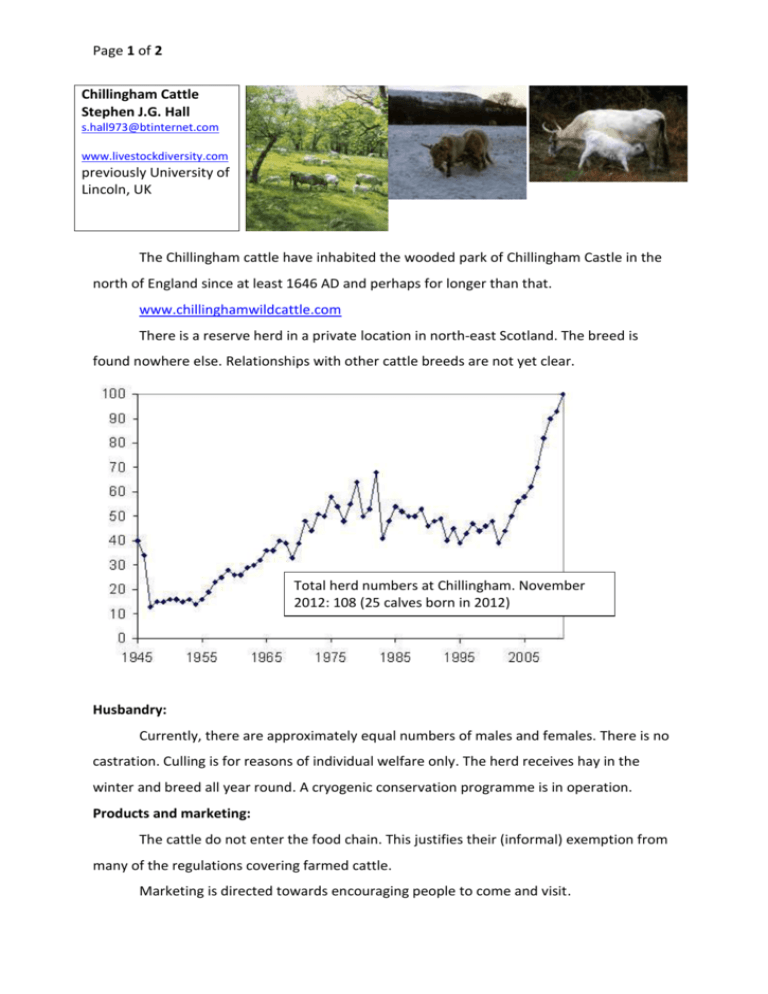
Page 1 of 2 Chillingham Cattle Stephen J.G. Hall s.hall973@btinternet.com www.livestockdiversity.com previously University of Lincoln, UK The Chillingham cattle have inhabited the wooded park of Chillingham Castle in the north of England since at least 1646 AD and perhaps for longer than that. www.chillinghamwildcattle.com There is a reserve herd in a private location in north-east Scotland. The breed is found nowhere else. Relationships with other cattle breeds are not yet clear. Total herd numbers at Chillingham. November 2012: 108 (25 calves born in 2012) Husbandry: Currently, there are approximately equal numbers of males and females. There is no castration. Culling is for reasons of individual welfare only. The herd receives hay in the winter and breed all year round. A cryogenic conservation programme is in operation. Products and marketing: The cattle do not enter the food chain. This justifies their (informal) exemption from many of the regulations covering farmed cattle. Marketing is directed towards encouraging people to come and visit. Page 2 of 2 Direct payments: Agri-environment support received, approx. 50,000 euro per year. Legal problems: None, but the herd would not be exempt from culling if diagnosed with foot-andmouth disease. Might be exempt from contiguous or precautionary cull. Veterinary experience: Management reported in Hall, S.J.G., et al. (2005). Management of the Chillingham Wild Cattle. Government Veterinary Journal 15,4. A sample of the herd was experimentally inoculated against BTV-8 in 2009, this was the first inoculation the cattle had ever received. Nature conservation: Though an ancient parkland with medieval trees and semi-natural grassland, Chillingham Park is not a Site of Special Scientific Interest as specific rare communities or species have not been recorded. Park management aims to enhance plant species richness, to protect the trees and to encourage tree regeneration. Reintroduction to wild etc. No plans. Scientific interest: Extensive scientific documentation. Particular current interest in genetic uniformity and in population dynamics. Academic bibliography: contact s.hall973@btinternet.com. Current management issues: Fuller understanding of population dynamics is urgently needed. The population crashed in the very severe winter of 1947 and slowly built up in numbers to the 1970s. Periods of instability followed, apparently settling at around 50 in the mid 1980s. Numbers remained broadly constant until removal of the sheep flock (300 ewes) from 2002. It is not known if numbers will stabilise without a culling programme. Local experience suggests that Chillingham Park should be able, with winter hay feeding, to support about 120 cattle.
